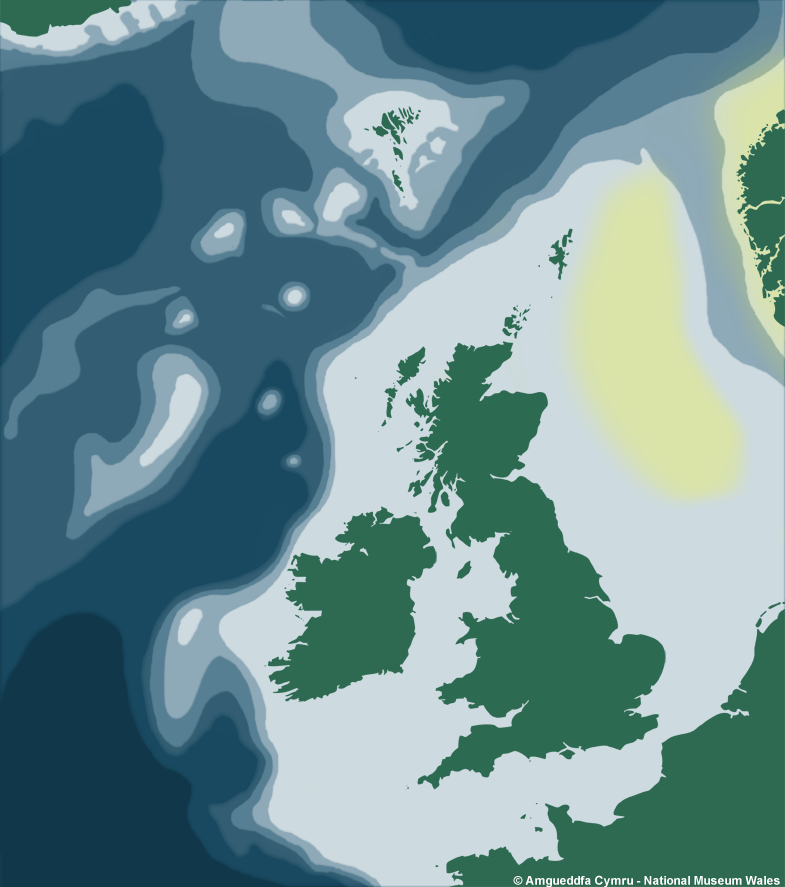Thyasira (Thyasira) sarsi (Philippi, 1845)
Thyasiroidea : Thyasiridae |
| Tebble name: | n/a |
| Smith & Heppell name: | Thyasira sarsi (Philippi, 1845) |
To size: To 25mm. Shell Structure: Thin. Equivalve: Equivalve. Equilateral: Equilateral. Tumidity: Not inflated. Outline: Subcircular; anterior dorsal (lunule) margin short weakly depressed; anterior broadly rounded with a weak angulation or truncation at junction with lunule margin; ventral broadly rounded; posterior weakly bisinuate. Contour: Auricle low, long extending to almost complete length of submarginal sulcus; first posterior fold low, rounded; second fold weak, rounded; posterior area weakly sulcate.
Sculpture: Growth line and stops. Margin: Smooth. Ligament: External, sunken but clearly visible and extending for 3/4 length of auricle. Hinge: Weak, RV with a rudimentary cardinal peg or protuberance; LV with indistinct corresponding depression. Pallial Musculature: Muscle scars obscure. Periostracum: Often persistent, silky. Colour: Shell white. Additional Characters: 2 demibranchs.
Distribution & Ecology
Gill anatomy – Dufour, 2005
Symbiosis – Southward, 1986; Dando & Southward, 1986; Dando & Spiro, 1993; Dando, Austin, Burke et al, 1991; Dando, Bussmann, Niven, et al, 1994
Depth Range
Continental Shelf (to 200m)

Additional Information & Related Species
Related Species
Thyasiroidea : Thyasiridae
References
Listed are literature citing Thyasira (Thyasira) sarsi (Philippi, 1845). Reference containing the species Type Description is highlighted.
|
Dando P R & Southward A J 1986. Chemoautotrophy in the bivalve molluscs of the genus Thyasira. Journal of the Marine Biological Association of the United Kingdom. 66: 915-929. |
|
Dando P R & Spiro B 1993. Varying nutritional dependence of the thyasirid bivalves Thyasira sarsi and T. equalis on chemoautotrophic symbiotic bacteria, demonstrated by isotope ratios of tissue carbon and shell carbonate. Marine Ecology Progress Series . 92: 131-158. |
|
Dando P R, Austen M C, Burke Jr R A, Kendall M A, Kennicutt M H, Judd A G, Moore D C, O’Hara S C M, Schmaljohann R & Southward A J. 1991. Ecology of a North Sea pockmark with an active methane seep. Marine Ecology Progress Series . 70: 49-63. |
|
Dando P R, Bussmann I, O’Hara S C M, Schmaljohann R & Taylor L J. 1994. A methane seep in the Skageraak, the habitat of the pogonophore Siboglinum poseidoni and the bivalve mollusc Thyasira sarsi. Marine Ecology Progress Series . 107: 157-167. |
|
Dufour S C 2005. Gill anatomy and the evolution of symbiosis in the bivalve family Thyasiridae. Biological Bulletin. 208: 200-212. |
|
Oliver P G & Killeen I J 2002. The Thyasiridae (Mollusca: bivalvia) of the British continental shelf and North Sea Oilfields. Studies in Marine Biodiversity and Systematics from the National Museum of Wales. BIOMOR Reports. 3: 1-73. |
|
Payne C.M. & Allen J.A. 1991. The morphology of deep-sea Thyasiridae (Mollusca: Bivalvia) from the Atlantic Ocean. Philosophical Transactions of the Royal Society of London Series B. 334: 481-566. |
|
Philippi R A 1845. Kritische Bemerkungen über einige Trochus- Arten und die Gattung Axinus. Zeitschrift für Malakozoologie. 1845: 87-91. |
|
Southward E C 1986. Gill symbionts in thyasirids and other bivalve molluscs. Journal of the Marine Biological Association of the United Kingdom. 66: 889-914. |
|
Taylor J D, Williams S T & Glover E A 2007. Evolutionary relationships of the bivalve family Thyasiridae (Mollusca: Bivalvia), monophyly and superfamily status. Journal of the Marine Biological Association of the United Kingdom. 87: 565-574. |
Resources
- Conchological Society
of Great Britain & Ireland
Provides resources for understanding, identifying, recording, and conserving molluscs - CLEMAM
Check List of European Marine Mollusca - MarLIN
The Marine Life Information Network for Britain and Ireland (MarLIN) provides information for marine environmental management, protection and education. It is a centre of excellence in spatially based and time-series marine biological information and supports good stewardship in the marine environment. - NBN Gateway
National Biodiversity Network's Gateway. Use it to explore UK biodiversity data, as contributed by participating data providers. - BivAToL
- MarBEF
- Malacological Society
- Unitas Malacologica
- Census of Marine Life
- MarBEF
MarBEF, a network of excellence funded by the European Union and consisting of 94 European marine institutes, is a platform to integrate and disseminate knowledge and expertise on marine biodiversity, with links to researchers, industry, stakeholders and the general public.












